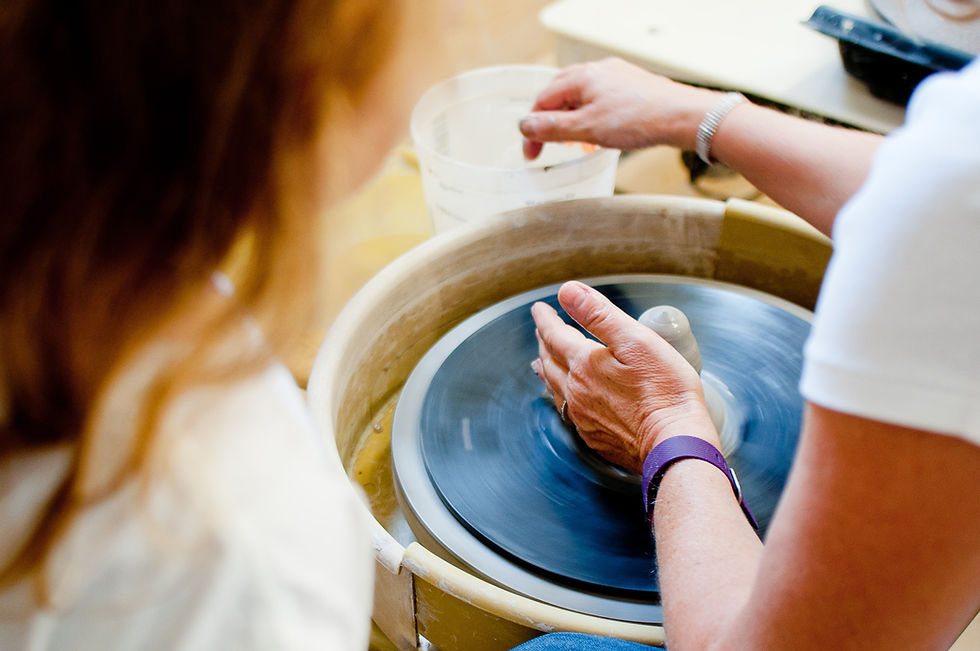Crafts of America
- Rac Agarwal

- Aug 18, 2020
- 3 min read
Updated: Nov 29, 2020
A handicraft, sometimes more precisely expressed as artisanal handicraft or handmade, is any of a wide variety of types of work where useful and decorative objects are made completely by hand or by using only simple tools. It is a traditional main sector of craft and applies to a wide range of creative and design activities that are related to making things with one hands and skill, including work with textiles, moldable and rigid materials, paper, plant fibers, etc. The American studio craft movement is a successor to earlier European craft movements. Modern studio crafts developed as a reaction to modernity and, particularly, the Industrial Revolution. American craft traditions have also been influenced by Art Nouveau or New Art. This movement as well as the England’s Arts and Craft’s Movement influenced the development of the contemporary studio craft movement in the during the late nineteenth century, throughout the twentieth century and to the present. In the early nineteenth century it became popular for rural Americans of modest means to take the decoration of their homes and furniture into their own hands.
The artist Rufus Porter was an early proponent of the American craft movement. By the end of the nineteenth century, the preindustrial craft trades had almost disappeared. Industrial expansion and westward movement had largely severed American culture from early Colonial American and Native American craft roots. The studio crafts movement was fostered by the establishment of crafts programs within post- secondary educational institutions. In 1894, for example, North America's first university ceramics was begun at Ohio State University. This was followed in 1901 by the establishment of the first ceramics art school at Alfred University. Similarly, the Rhode Island School of Design in Providence, Rhode Island established the first metal arts class in 1901 and the first textiles class in 1903. During the Depression years, the federal Works Progress Administration funded crafts projects as well as public works and murals as a way to both keep workers working and as a
way to increase national morale. This enabled crafts to flourish at a local level. At the same time, American art programs began to include craft studies into their curricula. European exiles brought with them a range of historical traditions including not only European craft practices but also knowledge of Asian and other non-Western cultures. Also during the post World War II period a general dissatisfaction with industrial society began to fuel further support for handmade art objects. In 1943, the American Craft Council was founded to support craftspeople and cultivate an appreciation for their work. Post-war American craft became steadily stylistically more refined as well as technically more proficient with the amalgamation of these various source of artistic knowledge coming together. During the 1950s, some artists turned to the truth-to-materials doctrine. This movement entailed an emphasis on the collective production of crafts work. Craftsmen sometimes worked together during this period to develop more ambitious projects. Throughout the 1950s and afterwards, potter Peter Voulkos developed increasingly large scale and non-traditional ceramic works, influenced by Abstract Expressionism, which transformed traditional understandings of the craft media.

The culture of the 1960s was even more conducive to the development of studio crafts. This
period saw a rejection of materialism exploration of alternative ways of living. For some, the creation of handicrafts provided just such an outlet. In 1962, then-ceramics professor Harvey Littleton and chemist Dominick Labino began the contemporary glassblowing movement. Thus Littleton and Labino were the first to make molten glass feasible for artists in private studios. In 1992, President George H. W. Bush signed a proclamation designating 1993 as The Year of American Craft. As part of this commemoration, Renwick Gallery director Michael Monroe selected seventy-two works by seventy American craftsmen which were donated to the White House to serve as The White House Collection of American Crafts. This collection was displayed for four months at the National Museum of American Art in 1995. Thus Handicrafts in the US has come a long way since it’s inception. It still stands true to its value currently as more and more people engage with the various mediums and capacity to indulge their artistic side. The materials have booth remained the same and has been up cycled, with the process unchanged or completely different. The fact remains that Handicrafts in US will continue to be a remnant of yore.





















































Comments